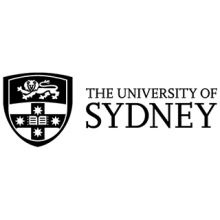Half of students at Australia’s most prestigious universities are on track to be from overseas, just as government reviews encourage smaller and higher-quality overseas student cohorts.
A study by global college chain Navitas projects that 51 per cent of students at Australia’s oldest tertiary institution, the University of Sydney, will be overseas citizens by 2030. International students will comprise 50 per cent of load at the University of Melbourne, 48 per cent at Monash University, 46 per cent at UNSW Sydney and 44 per cent at the University of Queensland.
The projections, presented at the Australian International Education Conference in Adelaide, apply a 3.7 per cent compound annual growth rate to universities’ international student cohorts in 2019. Domestic enrolments are projected to grow at a more sedate 1.8 per cent.
Campus views: Is your university worth the investment for international students?
Worldwide, the number of globetrotting tertiary education students is expected to balloon from 6 million in 2019 to 9.1 million in 2030, with Australia’s share rising from 506,000 to 725,000.
More modest growth to about 600,000 overseas students in Australia would have little impact on the enrolment profiles at the top institutions, with international students still close to majority status. Navitas said recent upheaval had only served to increase the concentration of international students in the best-ranked universities.
It said the Group of Eight share of the country’s overseas enrolments had risen from 26 per cent to 28 per cent during the 2010 downturn in Australian international education, and from 32 per cent to 38 per cent during the coronavirus pandemic.
Policies likely to restrict foreign admissions – such as changes to postgraduate work rights, more onerous student visa eligibility requirements or tougher permanent residency rules – could increase this proportion to 42 per cent.
Report co-author Ethan Fogarty said that while it was a “fool’s errand” to predict the looming policy changes, the government clearly wanted to focus on academically capable students with good fit for Australia’s skilled workforce needs.
It also wanted to “cut out the churn” of “non-genuine” students lured more by the prospects of work and migration than passion for their studies.
“Any changes will be intended to support a higher quality sector, but I think taken together it might mean that there will be fewer students than would otherwise be the case. The average quality of the students coming to Australia will also improve,” Mr Fogarty told Times Higher Education.
“If you take that as the best guess, the next question is: who wins and who loses from that?” said the report’s other co-author, Jon Chew. “In the past when the market’s contracted, it’s the top-end universities that have grown their share. Intuitively, that makes sense for a lot of reasons, but it’s a difficult and potentially unintended outcome.”
Canberra’s response to the Parkinson migration review is expected shortly. A draft migration strategy based on the review’s findings proposes tougher entry rules for students, a tightened points test for permanent residency and limits to the time former students can remain in Australia temporarily.
But the government has also flagged simpler immigration pathways and automatic graduate visas, raising questions about whether the strategy will boost or restrict student flows.
While some Australians might be disturbed by the idea of their top comprehensive universities becoming half international, most would probably be unaware. And local grievances over things such as foreign students’ impacts on housing stocks could ease at least partially if the enrolment growth rate was reduced.
The analysis found that China would remain Australia’s biggest foreign market for at least the next decade unless India’s economy improved substantially, roughly tripling its gross domestic product, or changes to migration rules vastly increased the allure of study Down Under.
Navitas also analysed the “Africa opportunity” for Australian universities, with almost 1 million international students studying around the world projected to come from sub-Saharan Africa by 2030 – up from about 550,000 in 2019. Only about 1.5 per cent of the region’s students head to Australia, which has “considerable headroom” for more African enrolments.
But Mr Chew said Australia would need to overcome the “diaspora effect” of well-established African communities in competitor countries such as the UK and Canada, which made them attractive to students from places such as Nigeria.
“We’re seeing many more people coming to Australia from the African continent, through the humanitarian, family and other streams of migration. We’re getting a much bigger diaspora now. Will that be a magnet for students in the future? Quite possibly.”
Register to continue
Why register?
- Registration is free and only takes a moment
- Once registered, you can read 3 articles a month
- Sign up for our newsletter
Subscribe
Or subscribe for unlimited access to:
- Unlimited access to news, views, insights & reviews
- Digital editions
- Digital access to THE’s university and college rankings analysis
Already registered or a current subscriber? Login










